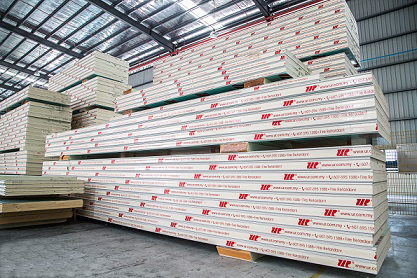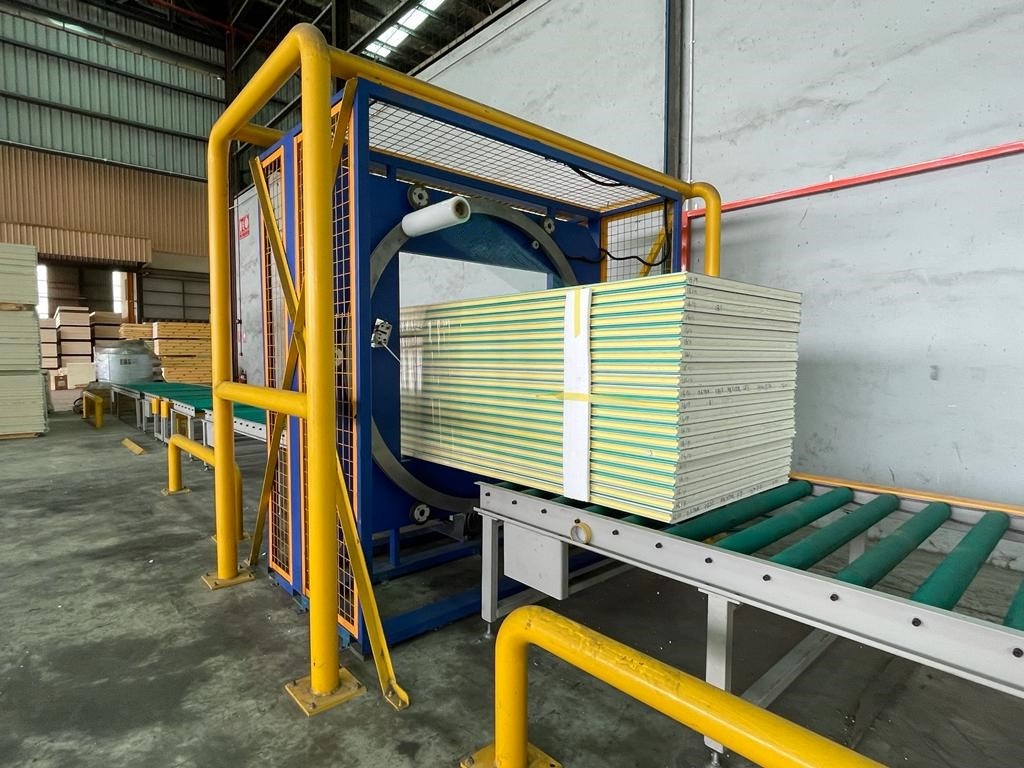Home › Products › United Panel › Introduction
United Panels - PIR, PUR & PS
About PIR (Polyisocyanurate)
Polyisocyanurate (PIR) insulation panels have excellent thermal performace, do not support the growth of fungi, are resistant to moisture ingress and are CFC-free.
PIR panels are extremely lightweight and are accepted worldwide as the best fire rated solution for insulated panel construction.
What is Polyisocyanurate Foam
To sum it all, Polyisocyanurate(PIR) foam is an improved type of Polyurethane (PUR) foam.
A different set of catalysts are used in the production of PIR foam as compared with PU foam. The proportion of methylene diphenyl diisocyanate (MDI) is greater and a polyester-derived polyol is used in reaction instead of a polyether polyol.
This reaction is achieved at higher temperatures which creates strong isocyanurate linkages in the molecular structure.These linkages are much stronger than the normal linkages in the PUR foam, much more difficult to break, hence making PIR foam chemically more stable.


Left: PIR panels. Right: Wrapping machine for panels.
Photo Credits: UNITED PANEL-SYSTEM(M) SDN BHD
About PUR (Polyurethane)
Polyurethane (PUR) or PU as it is more commonly called, is used in UR® panels. The rigid polyurethane foam is favorable for the manufacturing of refrigeration and cold storage panels due to its advantageous mechanical, chemical, biological and moisture properties.
Advantages of PU Foam
- Food grade compliance
- Superior thermal performance
- Moisture and corrosion resistance
- High density mechanical strength
- Fire retardant (incorporated)
- CFC free
Certified, recognised and approved
.png)
Equivalent Thickness Required For Same Degree Of Insulation
Insulation performance for PU panels is high even with a modest material thickness. Air and water cannot be penetrated and circulated within the panel walls, which provides better insulation and allows installation in all weather conditions.
PU panels are particularly suitable for wall and roof applications, due to their significant structural strength. In the event of fire, the foam does not drip or run, minimizing its flammable mass and preventing further flames from spreading.

Typical Physical Properties ( PU )
|
Property
|
Test Method
|
Unit
|
Result
|
| Core Density |
ISO EN 845
|
Kg/m³
|
42 - 44
|
|
Thermal Conductivity
|
DIN 52612
|
W/m.K
|
0.019
|
|
Compressive Stress
|
DIN 53421
|
N/mm²
|
0.16
|
|
Dimensional Stability
|
DIN 53431
-30ºC
+80ºC
|
%
|
Max 0.1
Max 0.2
|
|
Water Absorption
|
DIN 53428
|
Volume change
(%)
|
<2
|
|
Closed Cell Content
|
ISO 4590
|
%
|
>90
|
|
Flexural Strength
|
DIN 53423
|
N/mm²
|
0.26
|
|
Bending
|
DIN 53423
|
mm
|
10
|
|
Elongation At Break
|
-
|
%
|
5 – 10
|
|
Water Vapor Transmission
|
-
|
Perm – in
|
1.8 – 3.8
|
|
Operating Temperature
|
-
|
ºC
|
-40 to +80
|
NB: UR® panels have been certified by SIRIM QAS International and approved by the Malaysia fire authorities (BOMBA).
About PS (Polystyrene)

Extruded polystyrene foam (XPS) is produced on extruding machines in the foam of continous foam billets.The foam has an established reputation for long-term reliability and resistance to the elemental forces of nature.
Due tof the extrusion manufacturing process, XPS does not require facers to maintain its thermal or physical property performance.